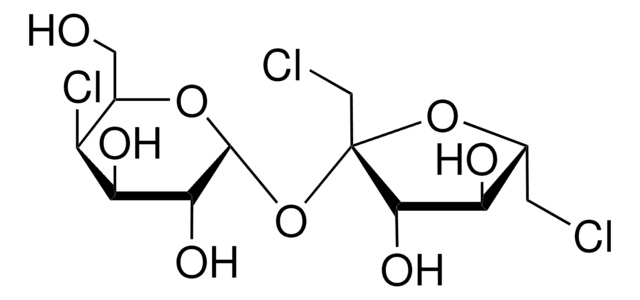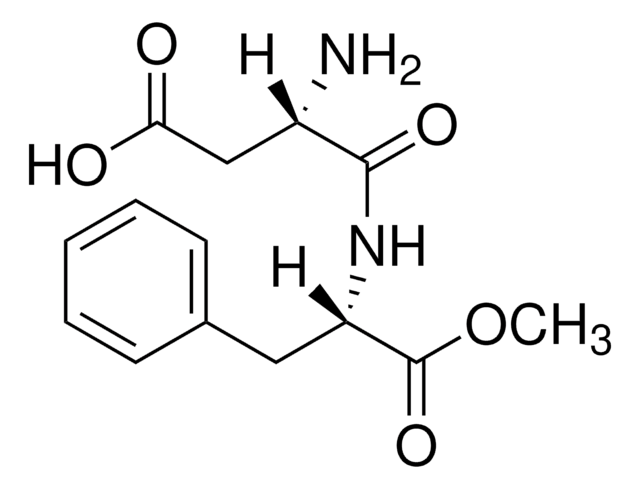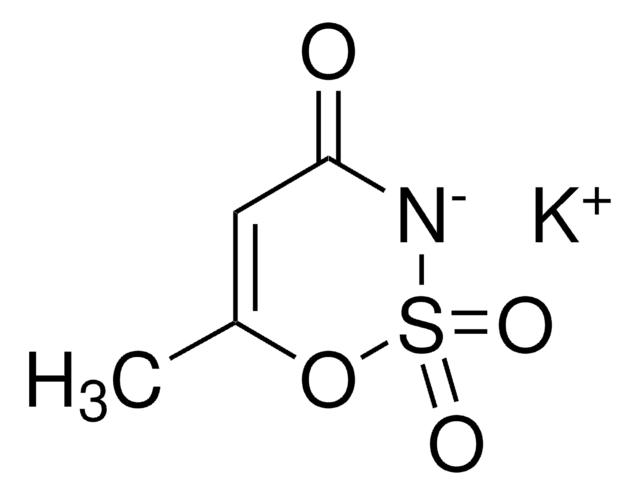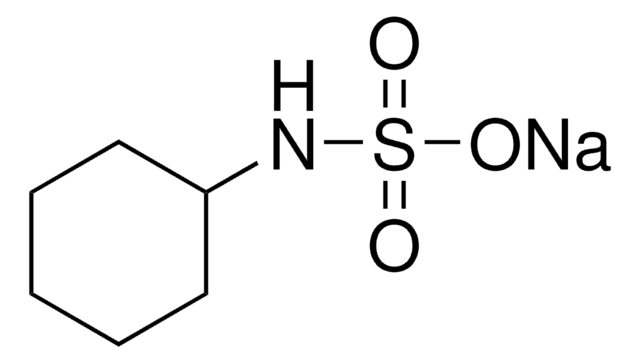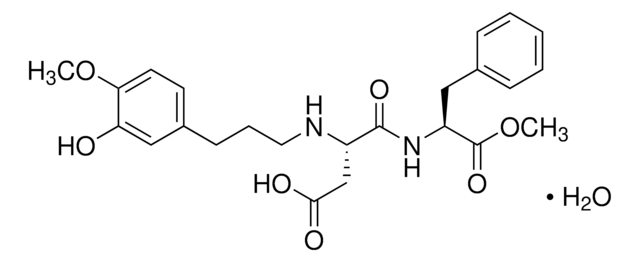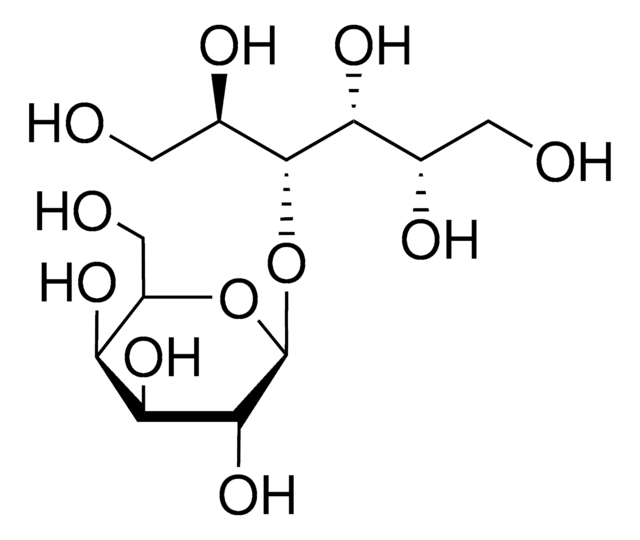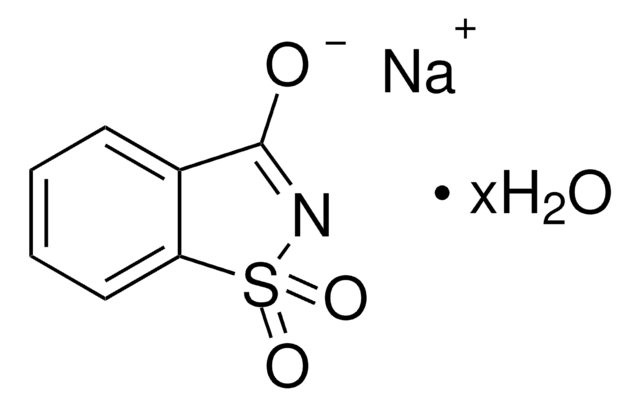90984
Sucralose
analytical standard
Synonym(e):
1,6-Dichlor-1,6-dideoxy-β-D-fructofuranosyl-4-chlor-4-deoxy-α-D-galactopyranosid, E955, Trichlorsucrose
About This Item
Empfohlene Produkte
Qualität
analytical standard
Qualitätsniveau
Assay
≥98.0% (HPLC)
Haltbarkeit
limited shelf life, expiry date on the label
Methode(n)
HPLC: suitable
gas chromatography (GC): suitable
Anwendung(en)
cleaning products
cosmetics
food and beverages
personal care
Format
neat
SMILES String
OC[C@H]1O[C@H](O[C@]2(CCl)O[C@H](CCl)[C@@H](O)[C@@H]2O)[C@H](O)[C@@H](O)[C@H]1Cl
InChI
1S/C12H19Cl3O8/c13-1-4-7(17)10(20)12(3-14,22-4)23-11-9(19)8(18)6(15)5(2-16)21-11/h4-11,16-20H,1-3H2/t4-,5-,6+,7-,8+,9-,10+,11-,12+/m1/s1
InChIKey
BAQAVOSOZGMPRM-QBMZZYIRSA-N
Suchen Sie nach ähnlichen Produkten? Aufrufen Leitfaden zum Produktvergleich
Allgemeine Beschreibung
Anwendung
- Commercial sugar-free products such as Splenda and Red Raspberry Diet Rite beverage using high performance anion-exchange (HPAE) chromatography coupled with pulsed amperometric detection (PAD).
- Water and beverage samples using liquid chromatography/time-of-flight mass spectrometry (LC/TOF-MS).
Biochem./physiol. Wirkung
Verpackung
Lagerklassenschlüssel
11 - Combustible Solids
WGK
WGK 2
Flammpunkt (°F)
Not applicable
Flammpunkt (°C)
Not applicable
Hier finden Sie alle aktuellen Versionen:
Besitzen Sie dieses Produkt bereits?
In der Dokumentenbibliothek finden Sie die Dokumentation zu den Produkten, die Sie kürzlich erworben haben.
Kunden haben sich ebenfalls angesehen
Artikel
The most frequently used synthetic sweeteners are: saccharin, cyclamate, aspartame, and sucralose (E955), and this application illustrate the analysis of sucralose from soy sauce following the current Chinese national standard method.
Unser Team von Wissenschaftlern verfügt über Erfahrung in allen Forschungsbereichen einschließlich Life Science, Materialwissenschaften, chemischer Synthese, Chromatographie, Analytik und vielen mehr..
Setzen Sie sich mit dem technischen Dienst in Verbindung.